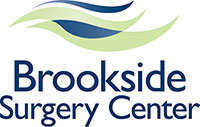Navio Surgical System at Brookside Surgery Center
Q: What is partial knee replacement / resurfacing?
 Partial Knee Replacement, or Partial Knee Resurfacing, or Partial Knee Arthroplasty represents a surgical procedure which replaces diseased (OA) bone with artificial surfaces. The surgical procedure occurs through a smaller or minimally invasive incision, and can treat either the medial, the lateral (inside or outside) compartment of the knee. Additionally, the patellofemoral joint (PFJ) (beneath the patella / knee cap) can be singularly resurfaced if damaged or more commonly in conjunction with the medial compartment.
Partial Knee Replacement, or Partial Knee Resurfacing, or Partial Knee Arthroplasty represents a surgical procedure which replaces diseased (OA) bone with artificial surfaces. The surgical procedure occurs through a smaller or minimally invasive incision, and can treat either the medial, the lateral (inside or outside) compartment of the knee. Additionally, the patellofemoral joint (PFJ) (beneath the patella / knee cap) can be singularly resurfaced if damaged or more commonly in conjunction with the medial compartment.
A PFJ and medial PKR combination surgery is referred to as bi-compartmental (two compartments of the knee) knee replacement. During PKR, the surgeon not only replaces the damaged joint, but re-balances the knee’s alignment. If a patient is several degrees out of neutral mechanical leg alignment, the PKR procedure can correct to near neutral – fixing bow-legged or knock-kneed deformities.
Q: Why would I choose partial knee replacement over total knee replacement?
Partial Knee Replacement has certain potential benefits over a Total Knee Replacement procedure for those patients who are properly indicated for PKR1. Whereas TKR completely reconstructs the knee and often sacrifices both the ACL and PCL, a partial knee procedure preserves any functioning and healthy ligaments and only replaces the compartment(s) of the knee that have osteoarthritic damage. This means that the patient may recover quicker from PKR surgery than TKR because of the smaller incisions and limited disruption to the soft-tissue capsular structure.
Q: What are the results of partial knee replacement?
A well-done partial knee replacement in an appropriately selected patient can have the survival rate that is comparable to that achieved with a total knee replacement in the first decade following surgery. The literature suggests that after the second decade, the revision rate may be somewhat higher for partial knee surgery than for total knee surgery. There may be an advantage to prolonging function and reducing pain in the patient’s joint prior to a total knee replacement, which is an end-of-the-line option.
Q: Why does the Navio system work well for PKR?
The Navio system works well for PKR because it allows the surgeon to utilize advanced robotic-assisted technology for accurate bone cutting in a platform that does not require a pre-operative CT scan. The robotic-controlled handpiece puts the power of a robotic-arm into the surgeon’s hands for them to engage fully with the operational technique.
Video – Introduction to NavioPFS Technology
